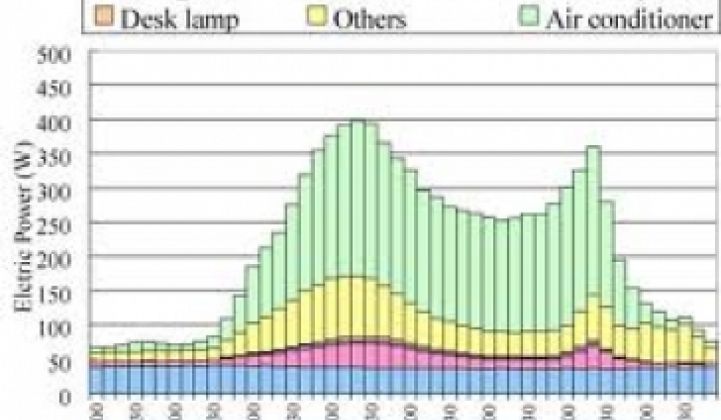The demand response industry is going to open up to a lot of new players next year.
In 2011, utilities will put together and begin to market demand response and power curtailment programs, said Larsh Johnson, president of eMeter, in an interview. Right now, utilities generally outsource demand response programs to companies like EnerNoc, CPower and EnergyConnect. Software and other tools from eMeter and others in the space are beginning to allow utilities to run these programs on their own.
By the middle of the next year, some of the initial utility-based programs will emerge, he said. By the end of the year, several eMeter customers will have fairly full portfolios of tools for power curtailment and efficiency. (Johnson will also head up a webinar on Wednesday at noon on smart grid information strategies, I noticed after I called him about this question.) The company's customers include Toronto Hydro, CenterPoint and Alliant Energy.
The anticipated expansion of demand response and power curtailment programs largely derives from three factors. First, curbing power consumption remains far cheaper and easier than building new power plants. Commercial buildings consume about 20 percent of the energy in the U.S. and buildings waste about 30 percent of their power "off the bat," according to Ed Richards, who founded the Cisco-acquired Richards-Zeta Building Intelligence. The spare power, in other words, already exists.
Second, the software and tools for curbing power are increasingly becoming sophisticated. To date, utilities have resorted to demand response in emergency situations, i.e., turning down AC units and other equipment during the infrequent peak-power emergencies.
"In the general case, there is more you can do," said Johnson. Curtailment applications tied to building management systems could potentially permit utilities to dim lights or adjust thermostats only slightly over a larger pool of customers on an ongoing basis. Honeywell, Cisco, EnerNoc and others have begun to acquire companies to better connect grid controls with building management systems. Earlier this month, eMeter showed off its home management system to White House officials.
Third, regulators love it. In California, utilities will have to provide near-real time power consumption information to consumers and third-party service providers by the end of 2011. Expect to see Google, AT&T and others tout energy management systems for homes and offices right about then.
"We want to use demand response and dynamic pricing to influence market pricing," said Albert Chiu, who runs demand management for PG&E, during a recent roundtable with reporters. By 2011, approximately 650,000 commercial and industrial buildings in California will receive their power under dynamic pricing schemes.
Whether or not utilities will compete directly against demand response and management companies or not started to emerge as a topic of debate about a year ago. By using software to run their own demand response programs could ideally cut costs, advocates have noted. Utilities would also have stricter control over the curtailment process.
On the other hand, this approach also entails staffing up a support desk. Demand management programs would also put utilities on the other side of the meter and ask them to function almost as energy consultants in some instances. Whether or not a public utility can advise a company on energy efficiency without running afoul of conflict of interest rules remains to be seen.
To eMeter and many of the grid software companies, the question is largely moot. They will sell software to third-party service providers and utilities and let them hash it out amongst themselves.



